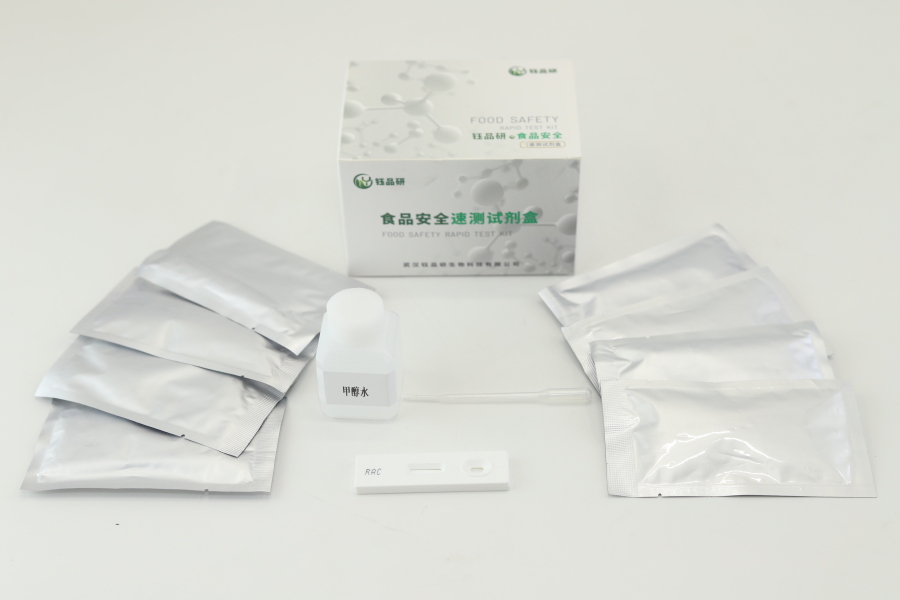Quinoethanol Colloidal Gold Rapid Detection Card is an immune detection product specially developed for the rapid detection of quinoethanol residues in feed, animal-derived foods (such as muscle, liver, kidney, etc.) and aquatic products. It is based on colloidal gold immunochromatography technology, which labels quinoethanol antigens or antibodies on colloidal gold particles, and forms a color-developing strip on the test strip through antigen-antibody specific binding reaction, so as to realize qualitative or semi-quantitative detection of the target.
From the working principle, the detection card contains four core parts: sample pad, binding pad, nitrocellulose membrane (NC membrane) and absorbent pad. When the sample (e.g. tissue homogenate, feed extract, etc.) is added dropwise to the sample pad, it will move along the test strip to the binding pad. At this time, the colloidal gold-antibody complex labeled on the binding pad binds to the quinolyethanol (or its metabolites) in the sample to form a complex. Subsequently, the complex continues to move to the detection line (T-line) and quality control line (C-line) areas on the NC membrane: the T-line is coated with the quinolyethanol-carrier protein conjugate. If the quinolyethanol is present in the sample, the complex will compete with the carrier protein of the T-line to bind the antibody, resulting in the color development of the T-line; if there is no quinolyethanol in the sample, the antibody will bind to the carrier protein of the T-line to The C-line is coated with an anti-antibody, which is used to verify whether the detection process is proceeding normally, and the C-line will develop color regardless of whether the sample contains quinolyethanol or not.
In practical applications, this detection card has become an important tool in the field of food safety testing with significant advantages. The first is that the detection speed is fast, usually 3-10 minutes to produce results, much faster than traditional high-performance liquid chromatography and other methods that require complex pretreatment and instrumental analysis; secondly, the sensitivity is high, and the detection limit of ng level can be reached, which can meet the detection requirements of the residue limit standard in food; the operation is also extremely simple, without professional equipment and complex training, just follow the instructions, drop the sample into the sample hole, and observe the color development of the strip to judge the result; in addition, the cost is low, suitable for large-scale screening use, especially for grass-roots testing scenarios such as breeding enterprises, slaughterhouses, farmers' markets, etc., as well as the rapid sampling work of government regulatory departments.
At present, the rapid detection of quinolinol colloidal gold card is widely used in the acceptance of raw materials in feed production enterprises, the monitoring of the withdrawal period in the breeding process, and the rapid screening of animal products before entering the market. It provides efficient and convenient technical support for ensuring the safety of animal-derived food and preventing health risks caused by the abuse of quinolinol.


